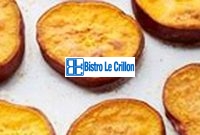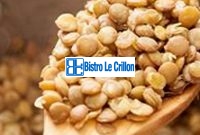Are you ready to take your cooking skills to the next level? Whether you’re a seasoned chef or a beginner in the kitchen, mastering the art of cooking dried chickpeas is a must-have skill in your culinary repertoire. These versatile legumes are not only incredibly nutritious but also incredibly delicious when prepared correctly. In this article, we will guide you through the process of cooking dried chickpeas to perfection, ensuring they are tender and bursting with flavor. So grab your apron and let’s get started on this culinary adventure!

The Health Benefits of Dried Chickpeas
Discover the nutritional value and health benefits of incorporating dried chickpeas into your diet. Dried chickpeas, also known as garbanzo beans, are a versatile legume that can be used in a variety of dishes. They are not only delicious but also packed with essential nutrients that can promote overall health and well-being. From their nutritional profile to their role in weight loss, there are plenty of reasons to include dried chickpeas in your meal plan.
Nutritional Profile of Dried Chickpeas
Dried chickpeas are a powerhouse of nutrients, providing a rich source of vitamins, minerals, and fiber. One cup of cooked chickpeas contains approximately:
- Fiber: 12.5 grams
- Protein: 15 grams
- Folate: 282 micrograms
- Manganese: 1.7 milligrams
- Iron: 4.7 milligrams
- Vitamin B6: 0.6 milligrams
These nutritional values make dried chickpeas a valuable addition to any diet. They can contribute to your overall daily fiber intake and help meet your protein requirements, especially for individuals following a plant-based or vegetarian diet. Additionally, chickpeas are low in fat and cholesterol-free, making them a heart-healthy food choice.
Health Benefits of Dried Chickpeas
Incorporating dried chickpeas into your diet can provide numerous health benefits. Here are some of the key advantages:
- Improved Digestion: The high fiber content in dried chickpeas can aid in maintaining a healthy digestive system. Fiber helps prevent constipation and promotes regular bowel movements, preventing digestive discomfort.
- Reduced Inflammation: Dried chickpeas contain antioxidants, such as flavonoids and polyphenols, which have anti-inflammatory properties. These compounds can help reduce the risk of chronic diseases, including heart disease and certain types of cancer.
- Stabilized Blood Sugar Levels: The combination of fiber and protein in dried chickpeas helps slow down the digestion and absorption of carbohydrates. This leads to a more gradual release of glucose into the bloodstream, helping regulate blood sugar levels and supporting diabetes management.
- Boosted Immune System: Chickpeas contain vitamins and minerals that support a healthy immune system, including vitamin C, vitamin E, and zinc. These nutrients help protect against infections and promote overall immune function.
How Dried Chickpeas Promote Weight Loss
If you are looking to shed some extra pounds, incorporating dried chickpeas into your weight loss journey can be beneficial. Here’s how they can help:
- Satiety: Dried chickpeas are rich in fiber and protein, both of which contribute to feelings of fullness and satiety. Including chickpeas in your meals can help control your appetite and prevent overeating.
- Lower Calorie Intake: Compared to many other protein sources, chickpeas are relatively low in calories. By substituting higher-calorie ingredients with chickpeas, you can reduce your overall calorie intake without sacrificing taste or nutrition.
- Stable Blood Sugar: The combination of fiber and protein in chickpeas helps regulate blood sugar levels. This can prevent spikes and crashes in energy levels, reducing cravings for sugary and high-calorie foods.
- Metabolism Booster: Chickpeas contain iron and B vitamins that play a crucial role in energy production and metabolic functions. A properly functioning metabolism is essential for maintaining a healthy weight.
Incorporating dried chickpeas into your diet can provide a wide range of health benefits. From their impressive nutritional profile to their positive impact on weight loss, these legumes are definitely worth including in your weekly meal plan. So next time you’re planning a meal, consider adding dried chickpeas to reap their many rewards!
Soaking Dried Chickpeas for Optimal Cooking
In order to master the art of cooking dried chickpeas, it is essential to understand the importance of soaking them beforehand. Soaking dried chickpeas not only helps to soften them, but it also aids in reducing the cooking time and improving their taste. There are different methods you can use to soak dried chickpeas, and each one has its own benefits. Let’s explore why soaking dried chickpeas is crucial and the two main soaking methods you can utilize.
Why Soak Dried Chickpeas
Soaking dried chickpeas is an important step because it allows them to rehydrate, which makes them easier to cook. When chickpeas are dried, they become hard and require a longer cooking time. By soaking them, you are essentially rehydrating the peas, making them softer and reducing their cooking time. Soaking also helps to remove any dirt or impurities that may be present on the skin of the chickpeas.
Additionally, soaking dried chickpeas can help improve their digestibility. Chickpeas contain complex sugars called oligosaccharides, which can cause gas and bloating when consumed. Soaking the chickpeas helps to break down these sugars, making them easier to digest and reducing the likelihood of experiencing digestive discomfort.
The Overnight Soaking Method
One popular method for soaking dried chickpeas is the overnight soaking method. This method requires planning ahead but is incredibly easy to do. To soak chickpeas overnight, simply place them in a large bowl and cover them with enough water to fully submerge them. It is important to use a bowl that is large enough to accommodate the expansion of the chickpeas as they absorb the water.
Once the chickpeas are submerged, cover the bowl with a clean kitchen towel or plate and let them soak overnight. Typically, chickpeas should soak for at least 8 hours, but it is recommended to soak them for 12 to 24 hours for optimal results. After the soaking time is complete, you can drain and rinse the chickpeas before proceeding with the cooking process.
The Quick-Soak Method
If you don’t have the luxury of time and need to soak chickpeas quickly, the quick-soak method can be a great option. This method involves bringing the chickpeas to a boil and then letting them sit in hot water for a shorter period of time. To use the quick-soak method, start by placing the chickpeas in a pot and covering them with water.
Bring the water to a boil and let the chickpeas boil for 2 minutes. After boiling, remove the pot from the heat and let the chickpeas sit in the hot water for about an hour. During this time, the chickpeas will absorb the water and begin to rehydrate. After an hour, you can drain and rinse the chickpeas before cooking them.
Both the overnight soaking method and the quick-soak method are effective ways to prepare dried chickpeas for cooking. Choose the method that works best for your schedule and enjoy the benefits of perfectly cooked chickpeas in your favorite recipes. Whether you’re making hummus, salad, or a savory curry, well-soaked chickpeas will elevate your dishes to new heights!
Cooking Dried Chickpeas on the Stove
Master the art of cooking dried chickpeas on the stovetop for a delicious, versatile ingredient.
The Stovetop Cooking Method
Cooking dried chickpeas on the stove is a simple and traditional method that yields perfectly cooked chickpeas every time. Follow these steps to achieve tender and flavorful chickpeas:
- Soaking: Before cooking dried chickpeas on the stove, it is important to soak them overnight. Place the dried chickpeas in a large bowl and cover them with plenty of water. Let them soak for at least 8 hours or overnight. This soaking process helps to soften the chickpeas and reduce the cooking time.
- Rinsing: After soaking, drain the soaked chickpeas and rinse them thoroughly under cold water. This step helps to remove any dirt or debris from the chickpeas.
- Cooking: Transfer the rinsed chickpeas to a large pot and cover them with fresh water. Use a ratio of 3 cups of water for every 1 cup of dried chickpeas. Bring the water to a boil over high heat, then reduce the heat to low and let the chickpeas simmer uncovered for about 1 to 2 hours. The exact cooking time may vary depending on the size and freshness of the chickpeas. Keep a close eye on them and occasionally skim off any foam or impurities that may rise to the surface.
- Testing for doneness: To check if the chickpeas are fully cooked, take a couple of them and gently press them between your fingers. They should be soft and easily mashed. If they are still slightly firm, continue simmering for a few more minutes and test again. Avoid overcooking, as this can result in mushy chickpeas.
Tips for Achieving Perfectly Cooked Chickpeas
To ensure that your cooked chickpeas turn out perfectly each time, here are some tips to keep in mind:
- Quality and freshness: Start with high-quality dried chickpeas for the best results. Freshness matters, so check the expiration date before purchasing.
- Soaking duration: Soak the chickpeas for at least 8 hours or overnight. This process helps to soften the chickpeas and shorten the cooking time.
- Rinsing: Rinse the soaked chickpeas thoroughly under cold water to remove any dirt or debris.
- Ratio of water to chickpeas: Use a ratio of 3 cups of water for every 1 cup of dried chickpeas. Adjust accordingly if you are cooking a larger or smaller quantity.
- Simmering time: Simmer the chickpeas over low heat to ensure gentle cooking. Avoid boiling them vigorously, as this can cause the skins to split.
- Testing for doneness: Use the finger pressure test to determine if the chickpeas are cooked to your liking. They should be soft and easily mashed.
Flavoring and Seasoning Your Cooked Chickpeas
Once you have cooked your chickpeas on the stove and they are tender and flavorful, you can get creative with how you season and flavor them:
- Spices and herbs: Add a variety of spices and herbs to enhance the flavor of your cooked chickpeas. Popular choices include cumin, paprika, garlic powder, and fresh herbs like parsley or cilantro.
- Citrus zest: Give your cooked chickpeas a pop of brightness by adding citrus zest. Lemon or orange zest adds a refreshing and zesty flavor.
- Sauces and dressings: Toss your cooked chickpeas with your favorite sauces or dressings, such as tahini, vinaigrette, or hot sauce, to infuse them with additional flavor.
- Roasting: For a crispy and flavorful twist, spread your cooked chickpeas on a baking tray and roast them in the oven. Toss them with olive oil and your desired seasonings, then roast at 400°F (200°C) for about 20-30 minutes until they turn golden brown and crispy.
With these tips and techniques, you can master the art of cooking dried chickpeas on the stove and enjoy their versatility in a wide range of dishes, from salads and soups to spreads and dips. So go ahead, get creative, and explore the many possibilities with this nutritious and delicious ingredient!
Using a Pressure Cooker to Cook Dried Chickpeas
Discover the time-saving benefits of using a pressure cooker to cook dried chickpeas. If you want to learn how to cook dried chickpeas, using a pressure cooker can be a game-changer. It not only saves you time but also ensures perfectly cooked chickpeas every time. In this section, we will explore why using a pressure cooker for chickpeas is a great idea, the pressure cooking method, and how you can unlock extra flavor with spices and aromatics.
Why Use a Pressure Cooker for Chickpeas
Using a pressure cooker for cooking dried chickpeas offers several advantages. Firstly, it significantly reduces the cooking time. While traditional stovetop cooking can take hours, a pressure cooker can cook chickpeas in a fraction of that time. This is especially beneficial when you are short on time or want to prepare a quick meal.
Another advantage of using a pressure cooker is that it helps to retain more nutrients in the chickpeas. The high-pressure environment in the cooker helps to preserve the vitamins and minerals that can be lost during longer cooking times. This means you can enjoy a nutritious and delicious meal without compromising on health benefits.
Additionally, a pressure cooker allows for better flavor absorption. The high pressure and temperature in the cooker help the chickpeas to soak up the flavors of spices and aromatics more effectively. This results in tastier and more flavorful chickpeas that can elevate any dish.
The Pressure Cooking Method
The pressure cooking method for dried chickpeas is straightforward. After rinsing and soaking the chickpeas, simply add them to the pressure cooker along with enough water or broth to cover them. You can also add some salt and spices at this stage to enhance the flavor.
- Close the pressure cooker lid securely to create airtight conditions.
- Set the cooker to high pressure and cook the chickpeas for around 25-30 minutes.
- Once the cooking time is complete, release the pressure according to the manufacturer’s instructions. This can be done using the natural release method or the quick release method.
- Open the lid carefully, and your perfectly cooked chickpeas are ready to be used in your favorite recipes.
Remember to follow the specific instructions of your pressure cooker model for the best results.
Unlocking Extra Flavor with Spices and Aromatics
To take your pressure-cooked chickpeas to the next level, you can add a variety of spices and aromatics. This will infuse the chickpeas with delicious flavors and make them even more versatile for different recipes.
Add spices like cumin, coriander, paprika, or turmeric to give your chickpeas a warm and earthy taste. You can also include crushed garlic, chopped onions, or ginger to enhance the aromatic profile of the dish. Experiment with different combinations of spices and aromatics to find your favorite flavor profile.
By using a pressure cooker and incorporating different spices and aromatics, you can elevate the taste of your chickpeas and create a culinary masterpiece. Whether you plan on making hummus, curries, or salads, these flavorful chickpeas will be a hit.
So, if you want to save time and enjoy perfectly cooked chickpeas with an explosion of flavors, try using a pressure cooker. With its time-saving benefits and enhanced flavor absorption, it’s a must-have kitchen gadget for any chickpea enthusiast.
How to Store and Freeze Cooked Chickpeas
Learn the proper storage techniques to keep your cooked chickpeas fresh and flavorful.
Storing Cooked Chickpeas in the Refrigerator
After cooking a batch of delicious chickpeas, it’s important to store them correctly to maintain their freshness and flavor. To store cooked chickpeas in the refrigerator, follow these simple steps:
- Cool the chickpeas: Allow the cooked chickpeas to cool completely before transferring them to a storage container. This will prevent condensation and bacteria growth.
- Packaging: Transfer the cooled chickpeas into an airtight container or sealable plastic bag. Ensure that the container or bag is clean and dry to avoid contamination.
- Labeling: Label the container or bag with the date of storage. This will help you keep track of the freshness of your chickpeas and prevent them from being forgotten in the refrigerator.
- Storage duration: Cooked chickpeas can be stored in the refrigerator for up to four days. Beyond that, they may start losing their quality and taste.
Note: It’s important to remember that chickpeas have a relatively short shelf life even when stored correctly. Always check for any signs of spoilage, such as an off smell or sliminess, before consuming refrigerated chickpeas.
Freezing Cooked Chickpeas for Future Use
Freezing cooked chickpeas is a great way to extend their shelf life and ensure you always have them on hand for quick and easy meals. Follow these steps to freeze your cooked chickpeas:
- Cool and drain: Allow the cooked chickpeas to cool completely and drain any excess liquid.
- Packaging: Transfer the cooled chickpeas into freezer-safe bags or airtight containers. Divide them into smaller portions for convenience if desired.
- Sealing: Remove as much air as possible from the freezer bags or containers to prevent freezer burn. Alternatively, you can use vacuum-sealed bags for optimal storage.
- Labeling: Clearly label the freezer bags or containers with the date of freezing to ensure you use the oldest chickpeas first.
- Storage duration: Cooked chickpeas can be stored in the freezer for up to six months. However, for the best quality, it’s recommended to use them within three months.
Note: Freezing may cause a slight change in the texture of the chickpeas. They may become slightly softer after thawing, but they will still be delicious and suitable for various recipes.
Reheating and Using Frozen Chickpeas
When it comes to using frozen chickpeas, you have a few options for reheating:
- Thawing: If you have time, you can thaw the frozen chickpeas in the refrigerator overnight. This gradual thawing helps retain their texture.
- Direct cooking: If you’re in a hurry, you can cook the frozen chickpeas directly in soups, stews, or other dishes. They will thaw and heat up during the cooking process.
- Oven reheating: Spread the frozen chickpeas on a baking sheet and heat them in a preheated oven at 350°F (175°C) for about 10-15 minutes or until heated through.
- Microwave reheating: Place the frozen chickpeas in a microwave-safe dish and heat them on high for 2-3 minutes, stirring halfway through, until they are hot.
Once reheated, you can use the delicious, tender chickpeas in a variety of dishes, such as salads, curries, or hummus.
By mastering the art of storing and freezing cooked chickpeas, you can enjoy their nutty and versatile flavor anytime you want!
Frequently Asked Questions
Here are some frequently asked questions about cooking dried chickpeas:
| No. | Questions | Answers |
|---|---|---|
| 1. | How long do I need to soak dried chickpeas? | You should soak dried chickpeas in water for at least 8 hours or overnight. This helps to soften them and reduce the cooking time. |
| 2. | Can I cook dried chickpeas without soaking? | While soaking is recommended, you can also cook dried chickpeas without soaking. However, this will result in a longer cooking time. |
| 3. | How do I cook soaked chickpeas? | After soaking, drain and rinse the chickpeas. Then, place them in a pot, cover with water, and bring to a boil. Reduce the heat and simmer for about 1.5 to 2 hours until tender. |
| 4. | Can I use a pressure cooker to cook dried chickpeas? | Yes, using a pressure cooker can significantly reduce the cooking time of dried chickpeas. Follow the manufacturer’s instructions for cooking times. |
| 5. | What can I do with cooked chickpeas? | Cooked chickpeas can be used in a variety of dishes, such as hummus, salads, stews, and curries. They are also great for making homemade veggie burgers. |
| 6. | How long can I store cooked chickpeas? | Cooked chickpeas can be stored in an airtight container in the refrigerator for up to 4 days. They can also be frozen for longer storage. |
Thanks for Reading!
We hope you found this article on how to cook dried chickpeas helpful. Now you can confidently prepare delicious meals using this versatile legume. Remember to soak the chickpeas overnight for best results and to save time, you can use a pressure cooker. Experiment with different seasonings and explore various recipes to make your chickpea dishes even more exciting. Visit again for more cooking tips and recipes!

How to Cook Dried Chickpeas
Ingredients
- 2 cups dried chickpeas
- Water for soaking and cooking
Instructions
- Rinse the dried chickpeas under cold water. Transfer them to a large bowl and cover with water. Soak for at least 8 hours or overnight.
- Drain and rinse the soaked chickpeas. Place them in a large pot and cover with fresh water. Bring to a boil over high heat, then reduce to a simmer. Cook for 1.5 to 2 hours until tender. Skim off any foam that rises to the surface. Drain the cooked chickpeas.
- Once cooked, the chickpeas are ready to be used in various recipes. Enjoy them in salads, soups, stews, or as a nutritious snack. Store any leftovers in an airtight container in the refrigerator.






